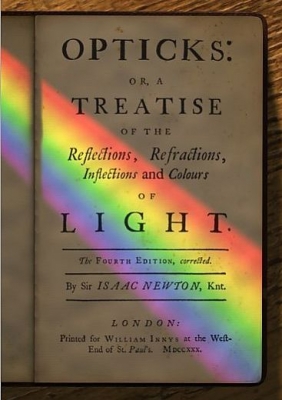
The English version of Opticks: or A Treatise of the Reflexions, Refractions, Inflexions and Colours of Light was published in 1704. A Latin translation of the book appeared in 1706. This is Newton’s second major book on physical science. It analyses the fundamental nature of light.
The book covers discoveries and theories concerning light and colour made by Newton in 33 years. It deals with ideas ranging from the spectrum of sunlight to the invention of the reflecting telescope. It also includes the first workable theory of the rainbow and the first colour circle in the history of colour theory. Newton also discusses various other subjects such as metabolism, blood circulation and a study of the haunting experiences of the mentally ill.
One of the major impacts of Opticks was that it overthrew the idea that ‘pure’ light (such as sunlight) is white or colourless, and it becomes coloured by mixing with darkness caused by interactions with matter. Newton showed that this assumption from the time of Aristotle and Theophrastus was wrong.
Newton also illustrated that colour is a result of the physical property of light, as each hue is refracted at a characteristic angle by a prism or lens. He also added that colour is a sensation within the mind and not an inherent property of material objects or of light itself. Considering the impact of the book on science, it is astonishing to think that it was initially published anonymously with just the initials I.N. at the end of an advertisement at the front of the book.
Picture Credit : Google
